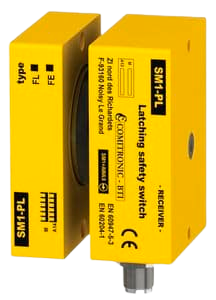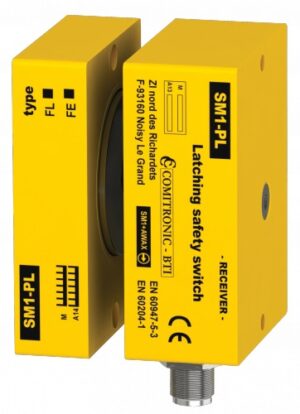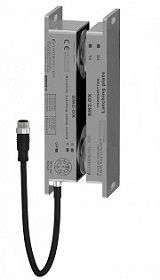Electro-Magnetic Solenoid Locking Switches
Introduction to Electromagnetic Locking Switches Definition and Overview Electromagnetic locking switches are a core component of modern machine safety systems, offering a safe, reliable locking…
Introduction to Electromagnetic Locking Switches
Definition and Overview
Electromagnetic locking switches are a core component of modern machine safety systems, offering a safe, reliable locking mechanism for movable guards. They are designed to meet a broad range of applications in machine guarding systems, access control, and automation control. Leveraging electromagnetic attraction, these safety interlock switches prevent accidental operation and ensure safe machine operation during maintenance or emergency stops.
Importance in Various Industries
These switches play an irreplaceable role in worker safety across packaging machinery, industrial robots, and food processing lines. Their tolerance to misalignment and high safety levels make them ideal for clean environments and harsh environments alike. Used extensively in automotive and heavy machinery, their locking function ensures separation-based safety in accordance with machine safety standards.
Key Components
A typical electromagnetic safety switch includes a built-in magnetic latch, an armature plate, visible indicators (such as LED status indicators), and an M12 8-pole Quick Connect. The magnetic locking function is supported by either permanent magnets or electromagnetic suction technology. Many models use keyless design or actuator teaching for easy installation, minimal maintenance, and flexible actuator alignment.
Working Principle of Electromagnetic Locking Switches
Electromagnetic Solenoids and Coils
These devices use electromagnetic principles: a solenoid generates a magnetic field that activates a locking mechanism. The internal coil ensures a strong holding force to keep guards closed until safe conditions are met. Some systems use hybrid technology or dual voltage inputs to accommodate varying power supplies.
Locking Mechanisms
The locking mechanism varies between power-to-lock and power-to-release configurations. These mechanisms provide functional safety and prevent accidental access during machine operation. Built-in spring and magnetic latch configurations ensure effective closure and protect against external forces.
Magnetic vs. Electromagnetic Interlocks
While magnetic safety switches often utilize permanent magnet systems with basic safety precautions, electromagnetic interlocks offer enhanced safety outputs, functional safety integration, and precise locking force control. Both magnetic
and electromagnetic variants meet international standards like ISO 13849 and EN ISO 14119.
Types of Electromagnetic Locking Switches
Contact vs. Non-contact Switches
Contact-based interlocks use conductive contacts and mechanical operations. In contrast, non-contact types—such as Pilz transponder non-contact safety switches or IDEM’s magnetic, non-contact safety interlocks—provide alignment forgiveness and separation-based safety with minimal design constraints.
Examples: Lockwood Padde and Steute Non-contact Switches
The Lockwood Padde series and Steute’s non-contact interlock switches support access control and are ideal for clean, industrial settings. These locking-type safety interlock switches often include features like anodized aluminum sensor housing, broad connection options, and built-in diagnostic capabilities.
Applications and Use Cases
Door Interlock Systems
In door interlock systems, electromagnetic safety switches ensure that machine enclosures or numerous doors cannot be opened while machinery is in operation. This prevents improper positioning and enhances the guarantee for workplace safety.
Machinery Operational Safety
Applications include floor-mounted hold-open magnets, interlock devices on medical facilities and battery packs, and protection of industrial equipment from nuisance trips or inertial movements. These switches support safety relays and standard safety relays for safety ratings up to SIL 3.
Industrial Automation
In automation components and control units, these switches manage access control and safe operation of processing machines. Connection type (e.g., 8-pin M12 Micro QD) and connection options support integration with a wide range of automation control systems.
Benefits of Electromagnetic Locking Switches
Security and Safety Enhancements
These devices improve safety interlocks through constant monitoring, auxiliary output for diagnostics, and resistance to chemical cleaning agents. They also protect against accidental operation and ensure compliance with safety door lock switch protocols.
Efficiency and Reliability
Designed for extreme temperatures and high-risk applications, these switches are ideal for industrial environments. Their simple structure and residual magnetization design allow for quick reaction to operator actions, supporting optimal operation with minimal delay.
Flexibility in Installation
These switches offer ease of installation and flexible installation with moulded-in brackets or dedicated brackets. They adapt to various housing materials like plastic housing or housing material aluminium, and meet safety requirements in environments exposed to foreign particles.
Features of Modern Electromagnetic Switches
Advanced Contact Configurations
Modern interlocks support advanced output configurations, alignment tolerance, dual channel interlock logic, and application-specific settings for a range of interlock switch scenarios. Built-in lock indicators, visible indicators, and customizable safety outputs support automation needs.
Large Offset Tolerances
Magnetic non-contact models allow generous tolerance to misalignment, ensuring high safety levels even under vibration or alignment deviations. This is crucial for movable machine elements and horizontal multi-joint robots in industrial automation.
Unobtrusive Integration
Modern interlock switches are designed for minimal interference with existing systems. They support clean installations with broadest safety portfolios across machine-guarding applications and integration with matrix manufacturer control systems.
Case Studies
SICK MLP1 Safety Switches
SICK’s MLP1 safety switch series supports electromagnetic locking with alignment forgiveness, safety levels up to PLe, and magnetic locking force that suits heavy-duty applications. It features actuator teaching, built-in diagnostics, and application characteristics that support digital twins and machine protection.
Safety InterlUSA HS7A-DMC Solutions
The HS7A-DMC electromagnetic lock demonstrates how lock monitoring and electromagnetic attraction technology ensures worker safety and compliance in mechanical safety interlock switches. It’s ideal for automation components and separation-based safety use cases.
Choosing the Right Electromagnetic Locking Switch
Considerations for Various Applications
Consider the connection type, safety function required, visible indicators, range of applications, and environmental conditions like exposure to chemical cleaning. Ensure proper delivery dates and compatibility with product specifications.
Evaluating Safety Standards
Choose switches compliant with functional safety and machine safety standards such as ISO 13849-1 and EN ISO 14119. Confirm suitability for industrial environments, harsh environments, and machinery with dual voltage or DC voltage operation. Review GS-M Series and GS-50 Series product selection for specific application scenarios.



